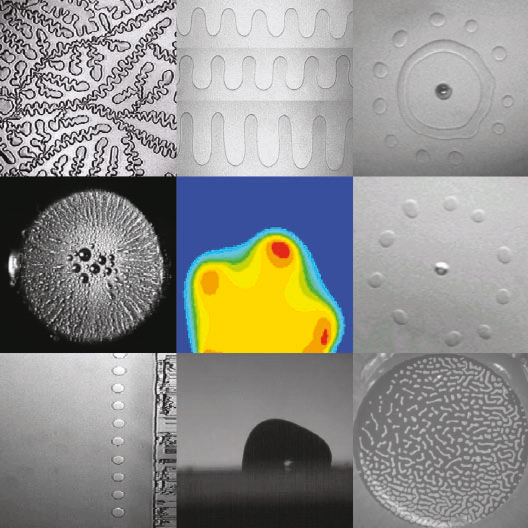Manoj Chaudhury has won recognition for wide-ranging and influential contributions to the fields of adhesion and interfaces.
Chaudhury, the Franklin J. Howes Jr. Distinguished Professor of chemical engineering, has published more than 100 papers, in journals ranging from Science to Nature to Physical Review Letters. Peers have praised him for “research that is beautifully conceived, clarifies basic ideas, and immediately suggests ways in which it can be used practically.”
In 2005, when he received the Award for Excellence in Adhesion Science from the Adhesion Society, Chaudhury was commended “for exceptional creativity and ingenuity in research.”
In 2006, the American Physical Society elected Chaudhury a Fellow, lauding his “fundamental studies on the roles of energetic and kinetic processes on adhesion, fracture and tribological properties of polymeric interfaces.”
Chaudhury is credited with helping launch a new field of interfacial fluid mechanics when, writing in Science in 1992, he and George Whitesides of Harvard described a method of making water droplets migrate on surfaces by controlling surface chemical forces. The discovery, he says, has potential for the conducting of chemical reactions useful to biotechnology.
In 2001, writing again in Science, Chaudhury – along with his former Ph.D. student Susan Daniel, now an assistant professor of chemical and biomolecular engineering at Cornell University, and John Chen, professor of chemical engineering at Lehigh – reported another breakthrough: By condensing saturated steam over a surface with a tension gradient, they caused the droplets to move at a much faster speed, approaching 1 meter per second. The high speed, Chaudhury believes, stems from the asymmetric properties of the gradient surfaces, which “rectify” the random motion and coalescence of the droplets.
“The practical side of this discovery,” he says, “is that the increased speed of the droplets can be used to design more efficient heat transfer devices.”
Chaudhury and Daniel have also collaborated with L. Mahadevan of Harvard to induce a flexible hydrogel rod to mimic the movements of snails, worms and snakes. The researchers described this work in Proceedings of the National Academy of Sciences. MIT’s Technology Review said the new method “could lead to new motion techniques for tiny machines, including robots that inspect difficult-to-get-to nooks, and for manufacturing processes that involve moving substances across surfaces.”

